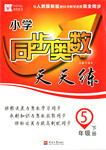题目内容
【题目】请认真阅读下列短文,并根据所读内容在文章后表格中的空格里填入一个最恰当的注意:请将答案写在答题纸上相应题号的横线上。每个空格只填一个单词。
“One, two, three, four, five, six, seven, eight...” That is the signal for half a dozen people braving a humid morning at Kamezuka park in Tokyo to bend, stretch, jump, and run on the spot. The group's personal trainer is a portable radio fixed on the top of a children's slide. A male voice’s simple instructions, issued to a lively piano accompaniment, have become a necessity of daily life in Japan since the broadcasts, known as Rajio Tais(radio calisthenics, first hit the airwaves almost a century ago.)
In 2003,the most recent year for which data is available, 27 million people said they took part in morning calisthenics more than twice a week, whether at work, at home in front of the TV or with Neighbors in the local park. Children perform Rajio Taiso before school sports days or during special summer holiday sessions ,earning credits that can be exchanged for snacks, stationery and other gifts.
Regular participants cover a broad cross-section of Japanese society: construction, factory and office workers including the 10,000 employees of the Tokyo metropolitan government, who are encouraged to leave their desks and start moving at 3 p.m. every weekday.
There are two standard routines-the second slightly more challenging than the first-each involving arm rotations, forward bends, straddle jumps and other aerobic exercises designed to move every muscle and leave participants slightly out of breath. In 1999,a routine was added for people who use wheelchairs or have other mobility issues.
“Studies show that people who exercise this way for just a few minutes a day have improved bone density, reduced risk of suffering a stroke or heart attack, and are generally in better physical shape than other people their age who don't exercise,” says Yasuo Fukusnl, secretary general of the Japan Radio Taiso Federation.
“There has never been any pressure to modernise the programme, because people have grown up with it and know it off by heart,” adds Fukushi, who believes the routine helps explain the impressive lifespan of Japanese people.
“We even do this when it rains,” says Tomomi Okamoto, a company director who joins the Kamezuka park sessions in all weathers. “It gets the blood pumping and I always feel much better afterwards. It's a great way to start the day,” she says. “But it's not just about the exercise- it is a way of communicating with your neighbors and getting to know people.”
Introduction | ●Radio calisthenics have won a 【1】 in Japanese daily life. |
【2】 | ●Children performing radio calisthenics to earn credits in 【3】 for gifts. ●Adults from all walks of life encouraged to participate 【4】. |
Different routines | ●Two standard routines 【5】 various aerobic exercises, leaving performers a bit 【6】 ●In 1999,an extra one was designed for those 【7】 challenged. |
Potential benefits | ●Compared with those who don't exercise,people who keep exercising per day are in better 【8】,with bones and hearts strengthened. ●People who make it a habit to exercise are likely to have their lifespan 【9】 ●Some individuals consider Radio calisthenics an exercise as well as a way of 【10】 |
【答案】
【1】place
【2】Participants/Performers
【3】exchange
【4】regularly
【5】involve/include
【6】breathless
【7】physically
【8】health/shape/condition
【9】lengthened /extended
【10】communication /communicating/ interaction/interacting
【解析】
这是一篇说明文。文章主要说明了广播体操在日本的流行情况、参与者的情况、不同的广播体操版本和广播体操的好处。
【1】考查名词。根据第一段中A male voice’s simple instructions, issued to a lively piano accompaniment, have become a necessity of daily life in Japan since the broadcasts, known as Rajio Tais(radio calisthenics, first hit the airwaves almost a century ago.)可知自从被称为Rajio Tais(广播健美操,大约一个世纪前首次在电视上播出)的广播播出以来,男声的简单指令,加上活泼的钢琴伴奏,已经成为日本人日常生活的必需品。由此可知,广播健美操在日本人的日常生活中占有一席之地。表示“占有一席之地”短语为win a place。故填place。
【2】考查名词的数。根据文章第二、三段分别说明了儿童和各行各业的人士也在参与,可知此部分是在讨论广播体操的参与者。由此可知,表示“参与者”可用可数名词participant或performer,且前面没有冠词故应用复数形式,句首字母要大写。故填Participants/Performers。
【3】考查固定短语。根据第二段中Children perform Rajio Taiso before school sports days or during special summer holiday sessions ,earning credits that can be exchanged for snacks, stationery and other gifts.可知孩子们在学校运动日之前或特殊的暑假期间表演拉练Taiso,赚取学分,可以换取零食、文具和其他礼物。由此可知,孩子们表演广播健美操,以挣得学分来交换礼物。表示“作为……的交换,交换”短语为in exchange for。故填exchange。
【4】考查副词。根据第三段Regular participants cover a broad cross-section of Japanese society: construction, factory and office workers including the 10,000 employees of the Tokyo metropolitan government, who are encouraged to leave their desks and start moving at 3 p.m. every weekday.可知定期参加活动的人来自日本社会的各个阶层:建筑业、工厂和办公室职员,其中包括东京市政府的1万名员工。市政府鼓励这些人在每个工作日的下午3点离开办公桌开始工作。由此可知,鼓励各行各业的成年人定期参加。修饰动词participate应用副词regularly,表示“定期地”。故填regularly。
【5】考查动词。根据第四段中There are two standard routines-the second slightly more challenging than the first-each involving arm rotations, forward bends, straddle jumps and other aerobic exercises designed to move every muscle and leave participants slightly out of breath.可知有两项标准的训练——第二项比第一项稍微有一点挑战性——每项都包括手臂旋转、前屈、跨骑跳跃和其他有氧运动,这些运动都是为了运动每一块肌肉,让参与者稍微喘不过气来。由此可知,两个标准套路涉及/包括各种有氧运动,让表演者有点喘不过气来。表示“涉及,包括”可用动词involve或include,且陈述客观事实应用一般现在时,主语为Two standard routines,故谓语动词用原形。故填involve/include。
【6】考查形容词。根据第四段中There are two standard routines-the second slightly more challenging than the first-each involving arm rotations, forward bends, straddle jumps and other aerobic exercises designed to move every muscle and leave participants slightly out of breath.可知有两项标准的体操——第二项比第一项稍微有一点挑战性——每项都包括手臂旋转、前屈、跨骑跳跃和其他有氧运动,这些运动都是为了运动每一块肌肉,让参与者稍微喘不过气来。由此可知,两个标准体操包括各种有氧运动,让表演者有点喘不过气来。表示“喘不上气的”形容词为breathless相当于文中的out of breath。故填breathless。
【7】考查副词。根据第四段中In 1999,a routine was added for people who use wheelchairs or have other mobility issues.可知1999年,为使用轮椅或有其他行动问题的人增加了一项体操。由此可知,1999年,又为残障人士增设了一套。表示“有生理缺陷的,残疾的”短语为physically challenged。故填physically。
【8】考查名词。根据第五段“Studies show that people who exercise this way for just a few minutes a day have improved bone density, reduced risk of suffering a stroke or heart attack, and are generally in better physical shape than other people their age who don't exercise,” says Yasuo Fukusnl, secretary general of the Japan Radio Taiso Federation.可知“研究表明,每天只锻炼几分钟的人,骨密度提高,中风或心脏病发作的风险降低,身体状况一般比其他同龄不锻炼的人好,”日本Taiso广播电台联合会秘书长Yasuo Fukusnl说。由此可知,与那些不锻炼的人相比,每天坚持锻炼的人身体状况更好,骨骼和心脏更强壮。表示“身体状况好,更健康”短语为be in better health/shape/condition。故填health/shape/condition。
【9】考查非谓语动词。根据第六段“There has never been any pressure to modernise the programme, because people have grown up with it and know it off by heart,” adds Fukushi, who believes the routine helps explain the impressive lifespan of Japanese people.可知Fukushi补充道:“从来没有任何使这个项目现代化的压力,因为人们是伴随着它长大的,而且已经熟记于心。”他相信这个程序有助于解释日本人令人印象深刻的寿命。由此可知,养成锻炼习惯的人有可能延长寿命。表示“延长”动词为lengthen或extend,且根据上文可知此处为“have sth. done”结构,lengthen或extend与lifespan构成被动关系,故用过去分词。故填lengthened /extended。
【10】考查名词或非谓语动词。根据第七段中“But it's not just about the exercise- it is a way of communicating with your neighbors and getting to know people.”可知“但这不仅仅是一种锻炼,也是一种与邻居交流、认识人的方式。”由此可知,有些人认为广播体操既是一种锻炼,也是一种交流方式。介词of后跟名词或动名词形式,表示“交流”可用communicate或interact。各自的名词形式为communication和interaction,动名词形式为communicating和interacting。故填communication /communicating/ interaction/interacting。

 状元及第系列答案
状元及第系列答案 同步奥数系列答案
同步奥数系列答案